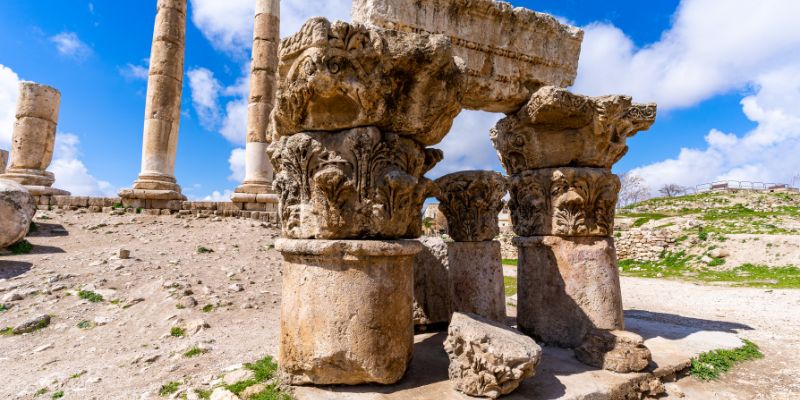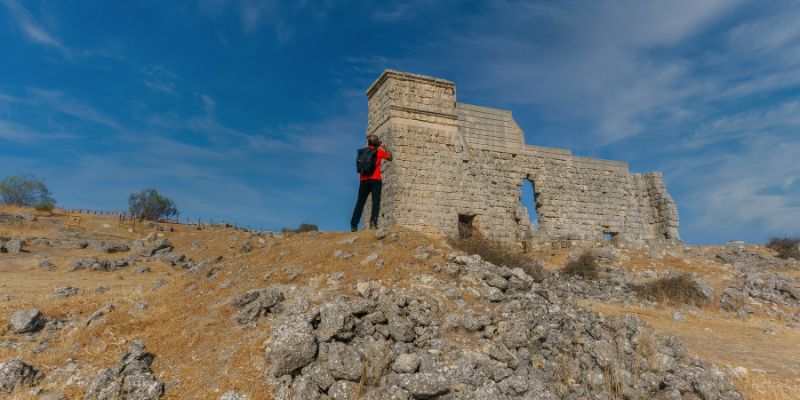There is a wide range of scale and grandeur among Roman ruins. Some are almost completely unaltered by time, while others are the crumbling shells of their past splendor. Each gives us a fascinating glimpse into Roman culture, from the deities they worshiped to the buildings they erected, the shows that pleased them, and the luxuries they included in their houses.
Yet Rome, home to the enormous Coliseum, Forum, and Pantheon, is universally recognized as the best place to learn about Roman history and culture. Even though Rome was the center of the Roman Empire, the Romans ruled over vast areas of Europe, Britain to the south, North Africa, and the Middle East.
Even though the Roman Empire is no longer in existence, many of its magnificent buildings and relics remain reminders of the strength and majesty it once had. No matter how big or small, these buildings reveal something about Roman society: its architectural and engineering brilliance, cultural and military triumphs, and day-to-day living. The 10 most incredible Roman Ruins are listed here.

10 Impressive Roman Ruins
Leptis Magna, Libya
The magnificent Septimius Severus Arch is your first glimpse of the lavish grandeur of this once-great metropolis. The tall marble structure is adorned with rich historical and religious symbols, and it was named for the local son emperor who reigned over this Roman town (the biggest in North Africa) during its prosperous heyday.
Follow the colonnaded boulevard that Severus built. You'll eventually reach the massive Hadrianic Baths, where the common people likely spent a lot of time relaxing and rejuvenating, owing to the inclusion of hot and cold chambers, saunas, a swimming pool, and marble latrines.
Baalbek, Lebanon
Baalbek, in present-day Lebanon, was formerly called Heliopolis by the Romans. The Phoenician temple to Baal and the Roman-era Temple of Jupiter are the two most well-known structures of this UNESCO World Heritage Site. When it comes to Roman ruins, this is one of the oldest and most weathered.
Imperial Baths of Trier, Germany
Kaiserthermen, or the Imperial Baths of Trier, are the well-preserved remnants of a Roman public bath complex built in the fourth century AD. Many of these ancient baths' walls and underground tunnels still stand, making them some of the most impressive Roman remains in Germany and some of the best-preserved and biggest examples of Roman baths outside of Rome. Located in the heart of Trier, the city's historic Imperial Baths are a major draw for tourists and locals alike.
Maison Carrée In Nimes, France
The Maison Carrée in the French city of Nimes is a beautiful Roman temple. Classical Roman architecture, as described by Vitruvius, may be seen in every detail of this monument. It has an impressive front, intricate embellishments, and ornate Corinthian columns encircle the inner building, making it one of the best-preserved Roman temples.
Emperor Augustus' trusted advisor, son-in-law, and heir apparent, Marcus Agrippa, commissioned Maison Carrée. This temple was constructed in 20 BCE and was initially devoted to the goddess Roma and the imperial guardian spirit. The re-dedication honored Agrippa's two young boys, Gaius and Lucius Caesar.

Porta Nigra, Germany
The 'Black Gate' (Porta Nigra) in Germany is among the most well-known Roman remains in the country. It is one of the few remaining pieces of the massive Roman defenses that formerly ringed Trier, or Augusta Treverorum, in the late 2nd century. Porta Nigra was the name given to a structure whose original name has been lost to history since it was built with massive slabs of light sandstone and became darkened in appearance over the Middle Ages.
The Walls of Constantinople, Turkey
The Walls of Constantinople are among the most famous Roman remains in the world since they were among the strongest city walls ever built. Constantinople, the Eastern Roman Empire's and Byzantine Empire's capital, was often saved by them. Even in their dilapidated state, the walls remain one of the most popular tourist sites in modern-day Istanbul, Turkey.
Aqueduct of Segovia, Spain
The Aqueduct of Segovia is a stunning example of Roman engineering. One of the most well-preserved parts of a Roman aqueduct may be seen in Segovia, Spain, and serves as the city's unofficial emblem. Although Spain isn't the first place that comes to mind when you mention Roman ruins, the Empire's influence was far and wide, making it easy to uncover unexpected treasures like these.
Pont Du Gard, France
The ancient Romans had a stellar reputation as engineers. The Romans needed an extensive aqueduct system to supply their growing towns with potable water. The Pont du Gard is the most well-known engineering marvel that has endured to the current day.
This magnificent Roman aqueduct bridge, which formerly crossed the River Gard in southern France, still survives today. The Pont du Gard, in France, is the tallest of the remaining Roman aqueducts at over 49 meters. It also happens to be the most well-known.
Pompeii and Herculaneum, Italy
Both the ancient towns of Pompeii and Herculaneum were obliterated by the 79 AD explosion of Mount Vesuvius. Until their rediscovery in 1748, both settlements were hidden behind layers of volcanic ash. Both cities have been uncovered, yet their states are different. Both Pompeii and Herculaneum have been trapped in time, and despite their dilapidated state, they are home to some of the most fascinating Roman remains ever discovered.
The Roman Theatre In Merida, Spain
The Roman theatre in Merida is Spain's most significant Roman architectural remnant. The theatre at Emerita Augusta, the province's capital, was built circa 15 BCE under the patronage of Marcus Agrippa.
Several theaters were renovated during the time of Emperor Trajan, including one with a permanent architectural backdrop of a stage. The theatre underwent extensive renovations during Constantine the Great's reign and attained its current form.
Conclusion:
The civilization of Ancient Greece laid the foundation of the Roman Empire. They established and maintained a vast, long-lasting empire throughout the Mediterranean. Numerous Roman remains attest that the ancient Romans were among the best engineers ever. A few Roman remains that everyone needs to see are listed here.

Sean William Jan 03, 2023
Aspen, Colorado: A Traveler's Guide For The Summer

Sean William Aug 28, 2023
Fascinating Cave Dwellings In The World

Juliana Daniel Aug 28, 2023
6 Most Beautiful Regions In Croatia

Sean William Dec 26, 2022
One Week Itineraries for Central Europe

Juliana Daniel Dec 25, 2022
Detailed Plan For A Single-Day Trip To Arches National Park

Juliana Daniel Aug 28, 2023
5 The Best Honeymoon Destinations In 2023: A Complete Guide

Sean William Aug 29, 2023
Packing Cubes: All You Need To Know To Pack Like A Pro in 2023

Juliana Daniel Jan 03, 2023